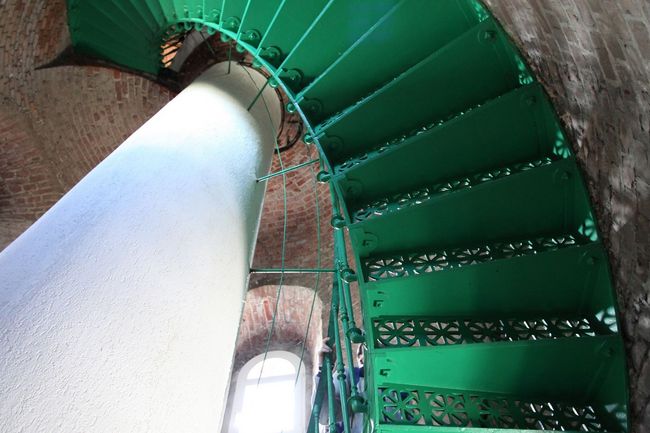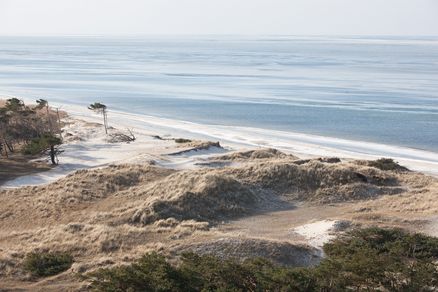History of the Lighthouse
Learn about the history, details and interesting facts of this remarkable structure.
The red brick lighthouse was built in 1848. It is the oldest lighthouse still on duty along the coast of Mecklenburg-Vorpommern – a truly exceptional building. Its long-range beacon warns ships of the Darß Sill. The lamp beams with a FI (2+4) W 22s characteristic, which means that every 22 seconds two and four flashes are emitted across the Baltic Sea. The light flashes are even visible from a distance of 23 nautical miles. A lighthouse keeper has not been on duty in the light room for a long time. The lamp has been radio-controlled since 1978. In the 1930s, lighthouse operation was switched from petroleum to electricity.
When the Darß Forest is getting gradually thinner and the lighthouse suddenly appears in front of you, you have almost reached your destination. There is just one last challenge of your journey ahead: climbing the tower. But walking up the 126 steps of the vibrant green wrought iron stairs with the open-work floral design will pay off. And when stepping out onto the viewing platform at a height of 28 metres, you will not only be out of breath from climbing to the top but stunned by a fantastic view over of the Darß, the Baltic Sea and even the Danish island of Møn if the weather is fine.
More than 84 shipwrecks that have been discovered off Darßer Ort bear witness to the importance of a beacon in this area. Many of the ships had sunk due the local dangerous shoals before the lighthouse was taken into operation on January 1, 1849. Walkers often come across stranded wooden frames and planks. Underwater archaeologists made a sensational find east of Darßer Ort. Washed in deep sand they found wreckage that could be identified as a 700-year-old cog. The Hanseatic ship was loaded with stockfish, Icelandic sulphur and reindeer antlers. It was a Merchant Adventurer that had sailed around Skagen into the Baltic Sea.


